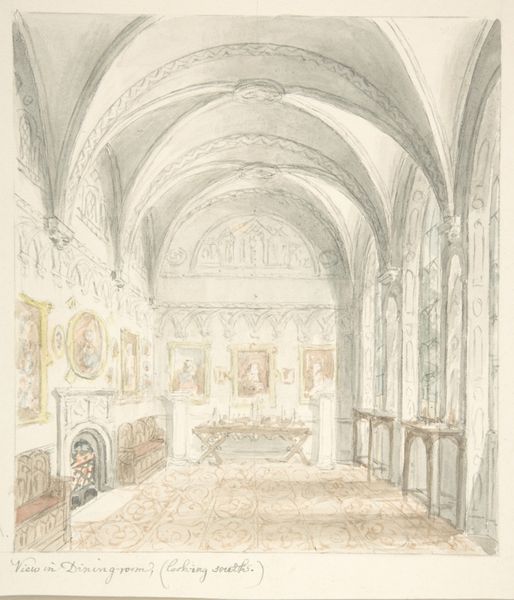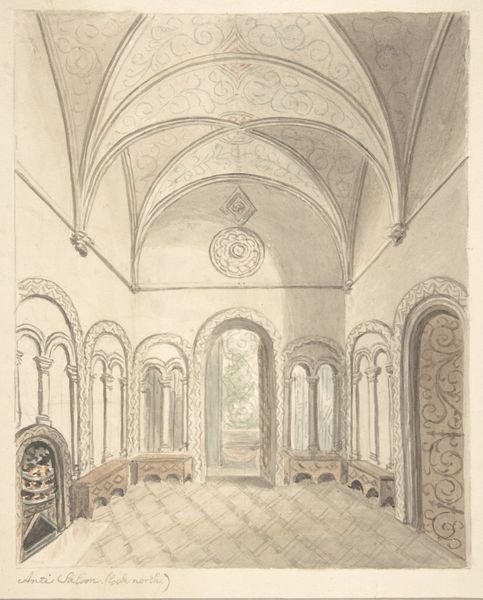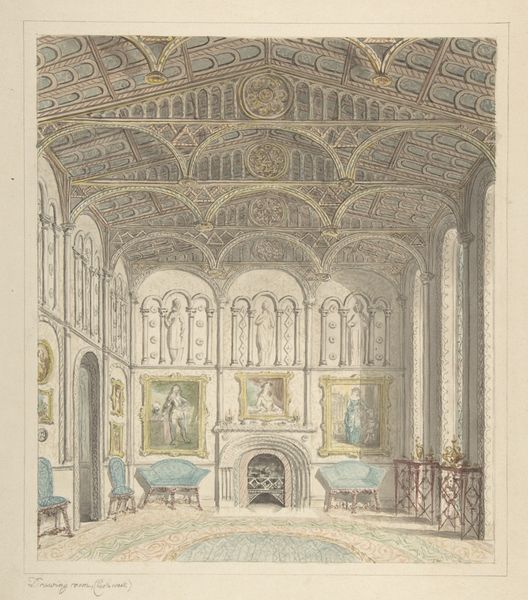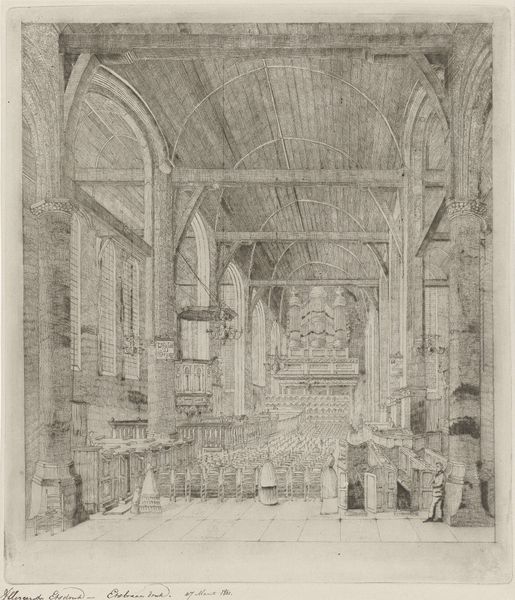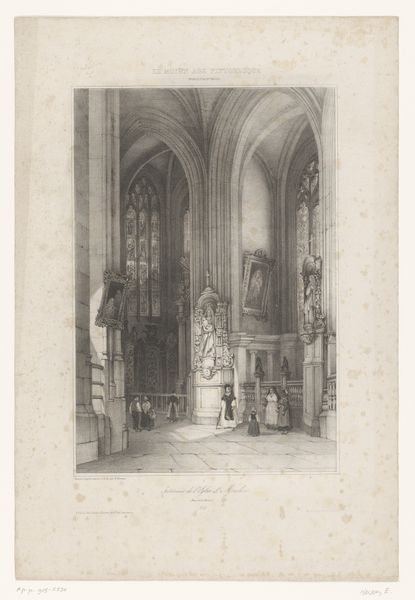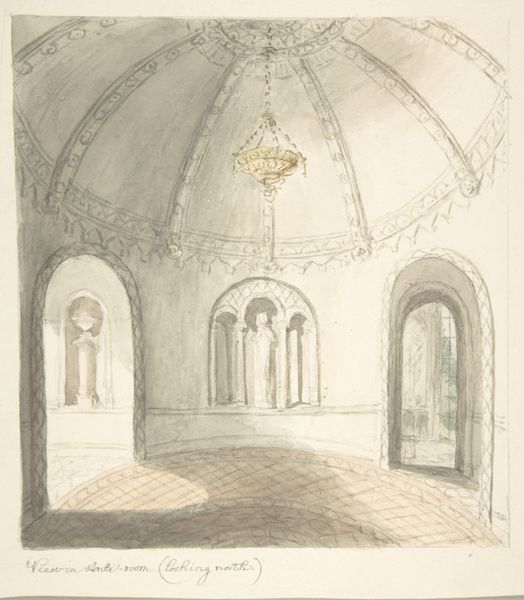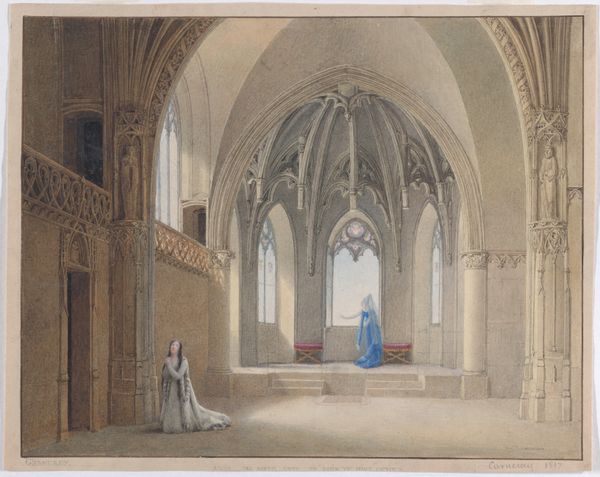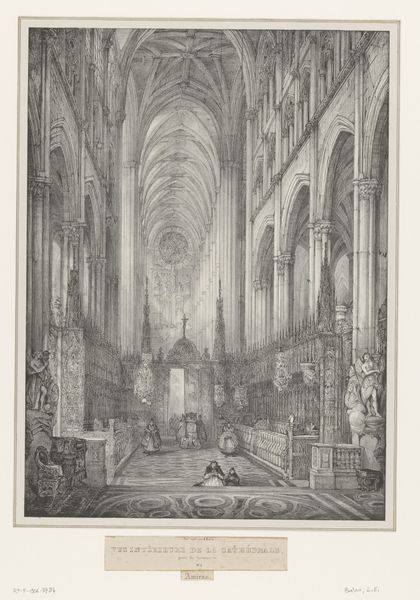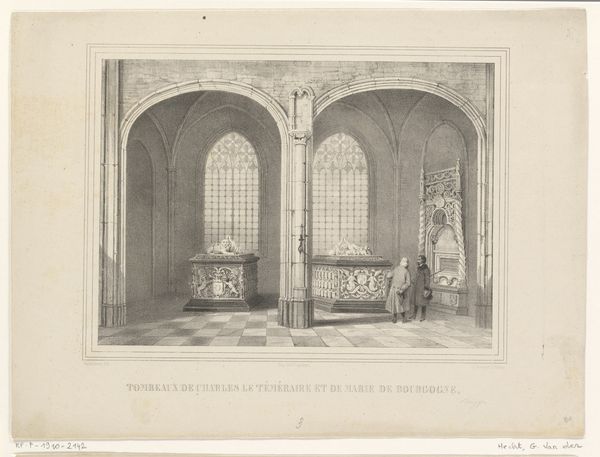
Lea Castle, Worcestershire, View in Bower, looking North 1811 - 1821
0:00
0:00
drawing, print, etching, watercolor, architecture
#
drawing
# print
#
etching
#
landscape
#
etching
#
figuration
#
watercolor
#
romanticism
#
genre-painting
#
architecture
Dimensions: sheet: 8 x 6 3/4 in. (20.3 x 17.1 cm)
Copyright: Public Domain
Curator: This watercolor and etching is titled "Lea Castle, Worcestershire, View in Bower, looking North", made sometime between 1811 and 1821 by John Carter. Editor: It’s remarkably delicate. The almost monochrome palette lends it a subdued, pensive quality. The architectural details, while intricate, feel softened, and that single figure adds to a sense of quiet solitude. Curator: Indeed. Carter was working amidst a burgeoning interest in medieval architecture. You see the fascination with Gothic interiors in the arched windows, ribbed vaulting, and decorative tracery, all popular during the Romantic era’s obsession with the past. Editor: Absolutely. And Carter really captured that here. The light, diffused through those stained-glass windows, seems almost tangible, creating an ethereal, otherworldly atmosphere. Notice how the repeating geometric patterns of the ceiling and floor contribute to an overall harmony. Curator: But what's fascinating is that while these grand estates sought to evoke the grandeur of the past, they simultaneously reinforced social hierarchies. Representations like this often idealized country life and the gentry’s place within it. These weren't simply images of architectural admiration; they were assertions of power and legacy. Editor: Yes, I see that now. Thinking about that social backdrop changes how I see the figure, her whiteness echoing that sense of legacy you mention. Despite being small in the scene she looks contemplative, not really looking towards the scene. The whole scene becomes less about place and more about people. Curator: Exactly! The art isn't merely an aesthetic portrayal; it's a carefully constructed narrative embedded with the era’s values and social realities. Editor: Seeing the formal and social context brings fresh nuance to this beautiful artwork. It makes me reconsider how place is inherently always about people, even when no people appear at all. Curator: And for me, examining this piece helps us think critically about the picturesque and its function as both an artistic style and social strategy in early 19th century England.
Comments
No comments
Be the first to comment and join the conversation on the ultimate creative platform.
